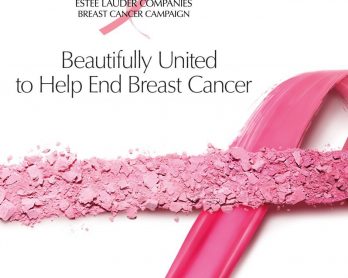The Estée Lauder Companies Publishes Methodology to Drive Sustainable Cosmetics Innovation & Strengthen Environmental, Social & Governance Commitments

Scientific Community Embraces Quantitative Approach to Incorporate Green Chemistry Principles into Product Formulation
As part of its ongoing commitment to advancing sustainability and innovation across its operations and the personal care products industry, The Estée Lauder Companies (ELC) has released its Green Score methodology to assess and measure the sustainability of ingredients and formulas based on green chemistry principles.
Years of dedicated development and evaluation have culminated in the publication of the peer-reviewed manuscript, “Applying Green Chemistry to Raw Material Selection and Product Formulation at The Estée Lauder Companies,” newly published in Green Chemistry, the Royal Society of Chemistry’s journal. The authors transparently share the Green Score’s methodology, data sources and unique framework to quantitively evaluate ingredients and formulas across its in-house portfolio of prestige beauty products through the lenses of human health, ecosystem health and the environment. By publicly sharing ELC’s approach, the company aims to encourage sustainable innovation across the consumer products industry.
“At The Estée Lauder Companies, we are committed to creating breakthrough, high-performing products that embed sustainability throughout their lifecycle. Our unique Green Score measurement and assessment tool enables us to integrate green chemistry into our product development process and further enhance the sustainability of our products,” said George Daher, Senior Vice President, Product Safety, Regulatory Affairs and Green Chemistry, The Estée Lauder Companies. “We hope that by publishing this methodology, our approach can be adopted, built upon and scaled by others across our industry to further advance sustainability and transparency.”
ELC will continue to use the Green Score to inform its decision-making, communicate expectations with suppliers, and prioritize raw materials, product types as well as product forms. The methodology is currently being leveraged by its formulation laboratories around the world to guide innovation for greener alternatives and to assess new product launches while maintaining performance standards. Green Scores have already been calculated for all individual materials and formulations across ELC’s in-house skincare, hair care and makeup portfolios. Additionally, all formulators throughout the organization have been trained to use the quantitative tool to assess the sustainability of their formulations in real time, so they can make educated choices about which ingredients to include.
The Green Score has also benefited from validation by ELC’s Green Chemistry Scientific Advisory Board, comprised of academic experts in green chemistry from its key global regions – China, Europe, North America and Latin America.
Dr. Paul Anastas, Professor in the Practice of Chemistry for the Environment at Yale University, who serves on the scientific advisory board and co-authored the manuscript, explains, “This tool has taken a concept that is quite complex and distilled it into a useful metric that not only assesses products that already exist but also informs how new, higher-performing products can be designed in the future.”
ELC’s Green Score is part of the company’s green chemistry program and broader commitment to Environmental, Social and Governance (ESG). The company has built a solid foundation to advance its objective of embedding green chemistry principles throughout the product-development process across its internal R&D and Supply Chain operations to continuously improve the environmental and human health profiles of its formulations while improving performance and delivering on consumer expectations. The Green Score complements existing social impact and sustainability initiatives by employing a scientifically robust and quantifiable metric for measuring sustainability of formulation, which is a material element of its value creation.
The ELC Green Score will be used to create metrics and track progress against formulation commitments to be outlined in the company’s Fiscal 2022 Social Impact & Sustainability Report. To learn more about ELC’s commitment to sustainability, access the Fiscal 2021 Social Impact & Sustainability Report.
“This is a really promising paper that shows how chemistry is helping established companies make real change in improving their green credentials,” said Dr. Andrew Shore, Executive Editor of Green Chemistry at the Royal Society of Chemistry. “The Estée Lauder Companies has produced a plan that shows how seriously they are taking their responsibility to protect the environment and their research was warmly received by the reviewers and members of the journal editorial board.”





